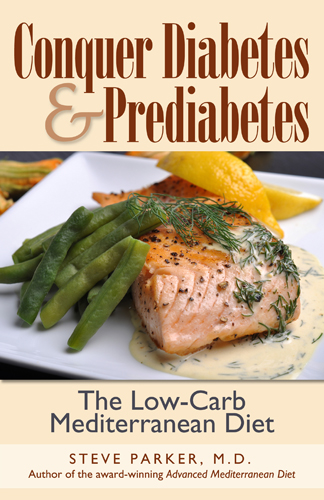[ad_1]

D.P. Strachan in 1958 proposed an concept referred to as the “hygiene speculation.” The idea is that infections and publicity to microbes (germs) in youth decreases the incidence of allergic and autoimmune ailments reminiscent of kind 1 diabetes, bronchial asthma, and atopic dermatitis. Autoimmune and allergic ailments appear to be on the rise for greater than a half-century, maybe associated to our urbanized life which have taken us away from the germ-rich surroundings of farms and forests. And we do our greatest to sterilize our houses with antimicrobial soaps, countertop cleaners, and hand sanitizers that we didn’t use even 20 years in the past.
Precisely how early-life publicity to infections and germs may result in autoimmune and allergic ailments is past the scope of in the present day’s submit. I’ll simply say that germ publicity might assist train our immune system to higher regulate itself. In case you don’t know, the immune system performs a big position in allergic ailments and signs.
A latest examine out of Finland helps the hygiene speculation and was revealed in Diabetes Care:
OBJECTIVE Environmental microbial exposures have been implicated to guard in opposition to immune-mediated ailments reminiscent of kind 1 diabetes. Our goal was to check the affiliation of land cowl across the early-life dwelling with the event of islet autoimmunity and kind 1 diabetes to judge the position of environmental microbial biodiversity within the pathogenesis.
RESEARCH DESIGN AND METHODS Affiliation between land cowl sorts and the longer term danger of kind 1 diabetes was studied by analyzing land cowl sorts categorised in accordance with Coordination of Info on the Atmosphere (CORINE) 2012 and 2000 information across the dwelling throughout the first 12 months of life for 10,681 kids genotyped for disease-associated HLA-DQ alleles and monitored from start within the Kind 1 Diabetes Prediction and Prevention (DIPP) examine. Land cowl was in contrast between kids who developed kind 1 diabetes (n = 271) or a number of diabetes-associated islet autoantibodies (n = 384) and kids with out diabetes who’re adverse for diabetes autoantibodies.
RESULTS Agricultural land cowl across the dwelling was inversely related to diabetes danger (odds ratio zero.37, 95% CI zero.16–zero.87, P = zero.02 inside a distance of 1,500 m). The affiliation was noticed amongst kids with the high-risk HLA genotype and amongst these dwelling within the southernmost examine area. Snow cowl on the bottom appeared to dam the switch of the microbial neighborhood indoors, resulting in decreased bacterial richness and variety indoors, which could clarify the regional distinction within the affiliation. In survival fashions, an agricultural surroundings was related to a decreased danger of a number of islet autoantibodies (hazard ratio [HR] 1.60, P = zero.008) and a decreased danger of development from single to a number of autoantibody positivity (HR 2.07, P = zero.001) in contrast with an city surroundings identified to have decrease environmental microbial variety.
CONCLUSIONS The examine means that publicity to an agricultural surroundings (comprising nonirrigated arable land, fruit bushes and berry plantations, pastures, pure pastures, land principally occupied by agriculture with vital areas of pure vegetation, and agroforestry areas) early in life is inversely related to the chance of kind 1 diabetes. This affiliation could also be mediated by early publicity to environmental microbial variety.
From the introduction:
“The incidence of kind 1 diabetes has elevated throughout the previous 70 years within the developed international locations paralleling related improve in different immune-mediated ailments reminiscent of allergic reactions and bronchial asthma. The fast improve, along with the conspicuous variation in incidence charges between international locations, helps the position of environmental components within the pathogenesis. Total, the incidence price tends to be excessive in international locations situated within the north, though exceptions to this pattern exist.
“Residing in an agricultural surroundings and contacts with livestock and pets at dwelling has been related to the next microbial variety indoors and a decreased danger of allergic ailments. Though the mechanisms of this phenomenon aren’t absolutely understood, a number of strains of proof counsel that publicity to environmental microbial variety and direct soil contacts might play a task. This, in flip, may result in the activation of immunoregulatory pathways suppressing overreactive immune responses, as offered by the biodiversity speculation. A large publicity of the pores and skin and mucosal surfaces to all types of microbes, together with micro organism, viruses, and eukaryotes, no matter whether or not they’re infecting or colonizing people, may present fixed immunological stimulation to the immune system, which is required for the event of wholesome immune regulation.
“As with allergic ailments, kind 1 diabetes can also be related to failure to regulate hyperreactive immune responses. In kind 1 diabetes, these immune responses goal β-cell autoantigens as an alternative of allergens.”
Steve Parker, M.D.

[ad_2]